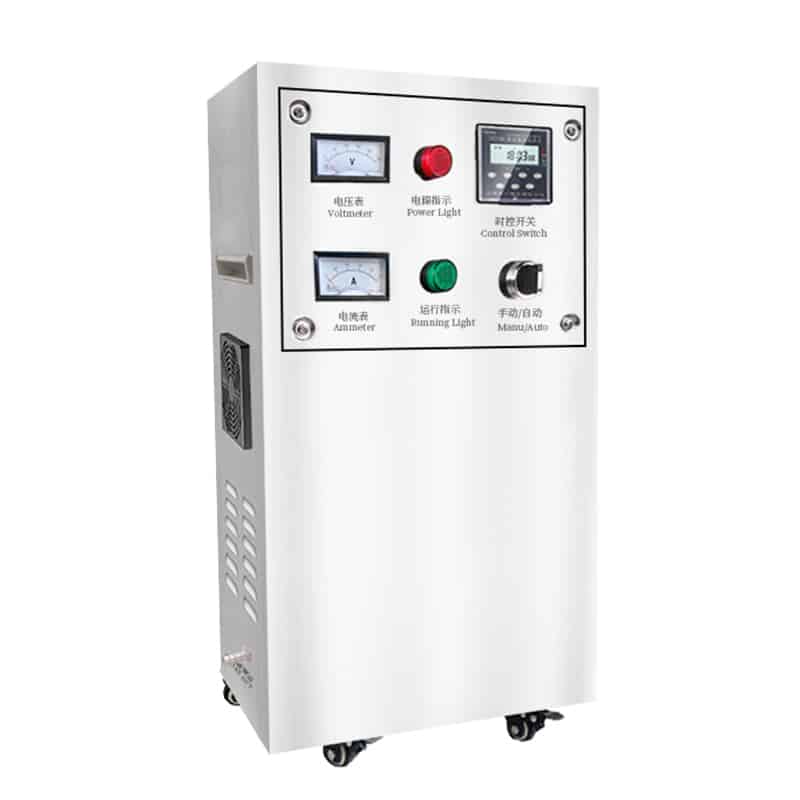Water tank disinfection is a vital process to maintain the quality and safety of stored water, whether for drinking, domestic, or industrial use. Over time, water tanks accumulate dirt, algae, bacteria, and other contaminants that can pose serious health risks. A proper disinfection routine not only eliminates these harmful elements but also prevents future contamination, ensuring the water remains clean and safe for use.
Why is It Important to Disinfect Water Tanks?
Water tanks are used to store large amounts of water, often for long periods of time. If not cleaned regularly, these tanks can become a breeding ground for the following problems:
Bacteria and viruses: Harmful pathogens such as E. coli, Legionella and Salmonella can thrive in still water.
Algae and biofilm: not only does this reduce water quality, it also provides an environment for microbial growth.
Sediment and debris: accumulated sediment can harbor contaminants and also reduce the actual capacity of the tank.
Regular disinfection ensures that stored water is suitable for its intended use, protecting public health while extending the life of the tank.
Common Methods of Water Tank Disinfection
Chlorination Disinfection
The most common method of disinfecting by adding chlorine-based chemicals. Particularly effective against bacteria and viruses.
Applicable scenarios: drinking water tanks, large water storage systems.
Ozone Treatment
Ozone gas is injected into the water to oxidize and neutralize microorganisms. It is fast-acting and has no chemical residues.
Scenarios: industrial or large-capacity water tanks.


Ultraviolet (UV) Disinfection
UV light destroys the DNA of microorganisms and prevents them from reproducing. It is a chemical-free solution for clear water.
Scenario: Low turbidity tanks.
Disinfection with Chemical Solutions
Other disinfectants such as hydrogen peroxide can be used for specific needs or as a supplementary step.
Thermal Disinfection
Heating the water to a high temperature is effective in killing most microorganisms, but may not be practical for large tanks.
Detailed Steps for Water Tank Disinfection
Preparation
- Turn off the water supply and empty the tank.
- Remove any visible debris or sludge from the bottom.
Cleaning
- Scrub the inside and bottom of the tank using a brush and mild detergent.
- Rinse thoroughly with water to remove all residue.
Disinfecting
- Prepare a disinfectant solution (e.g., chlorine solution at 50-100 mg/L).
- Fill the tank with the disinfectant solution, making sure that all surfaces are touched.
Soak time
- Allow the sanitizing solution to remain in the tank for the recommended time (usually 12-24 hours).
Rinsing and testing
- Empty the tank and rinse well with clean water.
- Refill the tank and test the water to ensure it is safe before use.
Tips for Long-Term Safe Maintenance
- Clean regularly: sanitize the water tank every six months or as needed.
- Use a filtration system: Prevent sediment and debris from entering the tank.
- Ensure the tank is sealed: Make sure lids and openings are well sealed to avoid contamination.
- Monitor water quality: Check water quality regularly using microbiological and chemical test kits.
Summary
Disinfecting water tanks is not just a hygienic practice, it’s a key measure for protecting your health and ensuring a clean water supply. By taking a systematic approach to cleaning and choosing the right disinfection method, you can keep your tanks in optimal condition while ensuring safe water quality for a variety of applications.
KUOSI is committed to providing comprehensive water treatment solutions, focusing not only on efficient disinfection system equipment, but also covering a wide range of core equipment for sludge treatment and wastewater management. Our products include sludge dewatering equipment, sludge dryers, sludge conveyors, dosing systems, DAF air flotation systems, aeration blowers, wastewater screens, grit removal equipment, compactors, scrapers and SBR decanter centrifuges. Whether it is wastewater treatment or solid-liquid separation, we can provide you with reliable support. For assistance, please feel free to contact us and let us help you create a more environmentally friendly and efficient water treatment system!
